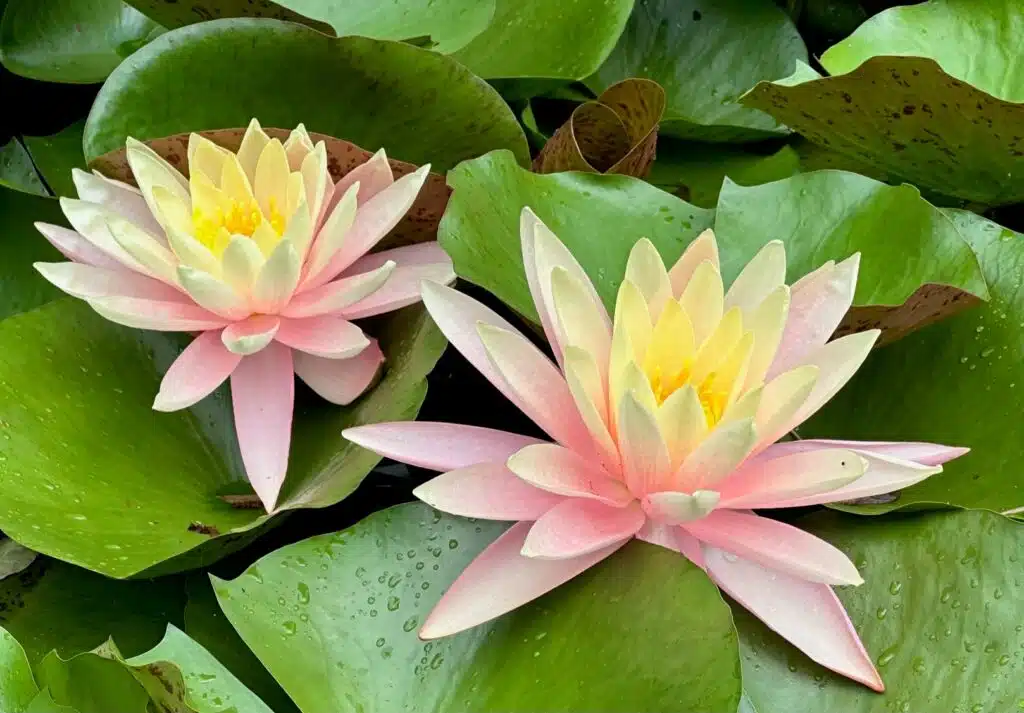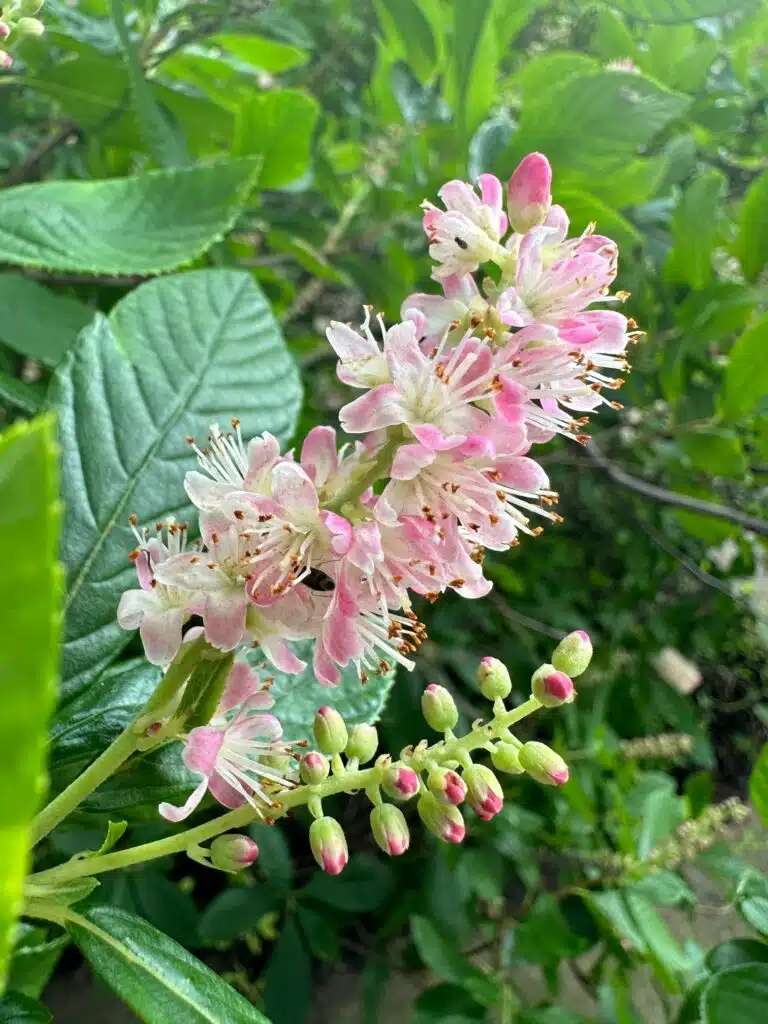
At the Garden this week, Asia Armour’s “Art in Bloom” display continues to look spectacular. As it grows, this palette of Coleus and Geranium just keeps looking better. On a cloudy Thursday afternoon, the colors shone brightly and boldly. It’s a must see in late summer.

I also explored the Hershey Children’s Garden, and the beautiful water lilies in the frog pond jumped out of the big waxy green lilypads. The huge blossoms are of Nymphaea “Yellow Sensation”, but I would describe our flowers as more peach than yellow. They’re sublime!

Finally, on my trip back through the sensory garden I caught the aroma of the summersweets Clethra alnifolia ‘Ruby Spire’, a cultivar of shrub to the southeast.

At the Arboretum, I was once again pulled to the butterfly garden, my favorite place to be in late July and early August. I found several different cultivars of Phlox species, including ones with bright pink, light blue, and white five-petaled blooms.

The bee balm in front of the Thayer Center is still attracting hummingbirds to its tubular shaped scarlet flowers. And while it’s been blooming for a while, the native flowering spurge has reached peak and is one of my favorites! I’ve seen it very few times growing wild in Ohio, and it was always on the dunes of Lake Erie beaches. It’s related to a common weed that grows in sidewalk cracks- but flowering spurge is upright and covered with small but prolific disc-shaped white flowers.

It’s hot! Stay cool by coming early or late- but you’ll be sure to see plenty of fun plants in bloom at both campuses.

Tom Arbour, M.En.
Curator of Living Collections
As Curator of Living Collections at Holden Forests and Gardens, Tom guides the acquisition and documentation of more than 20,000 plants and trees at Cleveland Botanical Garden and The Holden Arboretum. Significant arboretum collections include oak, crabapple, maple, conifers, and Ohio wildflowers. At the Cleveland Botanical Garden, two biome-based glasshouses contain plants of the Madagascar spiny forest and a rich neotropical rainforest community. Tom is particularly interested in connecting with those wanting to use Holden’s living collections for research. Please contact Tom to learn more about the broad collection of trees and plants at our two campuses.













